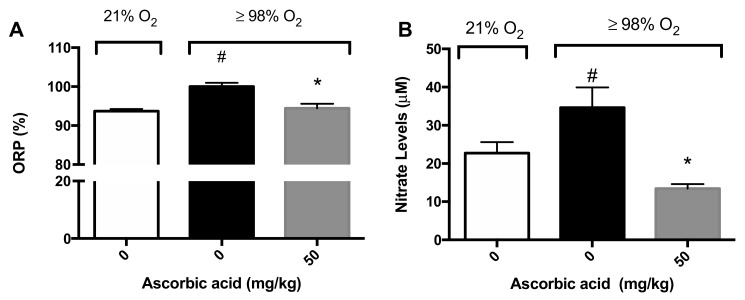Figure 6.
Ascorbic Acid (AA) attenuates hyperoxia-induced oxidative stress in lungs. Mice were exposed to ≥98% O2 or 21% O2 for 72 h and randomized to receive either ascorbic acid (50 mg/kg i.p.) or saline. Mice were sacrificed and BALF was harvested and the oxidation-reduction potential (ORP) was determined (A) (n = 8–11 each group) and nitrite levels (B) (n = 8–11 each group). The data represent the mean ± SEM of three independent experiments. * p ≤ 0.05 compared to 98% O2 control mice. # p ≤ 0.05 compared to 21% O2 control mice.

